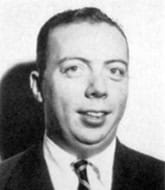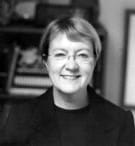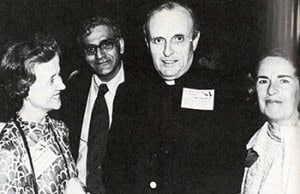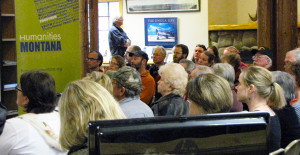
“And this is only the beginning,” remarked John S. Robling, chair of the National Book Committee cosponsored by the American Library Association (ALA) and the American Book Publishers (ABP) about the first National Library Week (NLW), held March 16–22, 1958.

By any measure, the event was a huge success:
- Some 68 million subscribers to 22 national magazines could read well-placed articles about libraries.
- A total of 170 million homes served by radio and TV could hear or view 14 network programs on libraries.
- Readers could glean 11,607 stories celebrating libraries running in newspapers at the same time.
- Even the US Post Office Department carried metered postage sporting the NLW theme, “Wake Up and Read!”

More than 5,000 American communities participated that week, many establishing committees to conduct public relations and advertising campaigns in order to promote library use.
“What impressed us most, indeed what almost overwhelmed us, were two things,” Robling subsequently reported—the “vigor, originality, and skill with which state and local committees, sparked by librarians, originated and carried through programs of amazing variety and effectiveness; and the warm and instant response to the aims of National Library Week we found everywhere.”

What lessons did his committee learn for the future? “The most important thing it . . . has learned is the tremendous strength that friends of libraries and books and reading have when they act together. I don’t think any of us a year ago could have believed the response that was to come to this year’s effort.”
Robling’s words proved prescient, albeit not without bumps along the way. When the National Book Committee voted to relinquish NLW sponsorship on September 30, 1974, ALA quickly picked up the program that, at the time, was already late in its 1975 planning year.

Placed under the supervision of Public Information Office (PIO) Director Peggy Barber, ALA hustled to meet expectations and came up with the theme “Information Power!” for NLW (April 13–19) that included radio spots featuring TV personalities Valerie Harper and Carroll O’Connor, stories mailed to 3,500 newspapers and periodicals, plus bookmarks, banners, and buttons for local publicity campaigns.

During the 1975 National Library Week, 37 librarians from across the country (including ALA President Edward G. Holley and Vice President Allie Beth Martin) buttonholed as many US legislators as they could to say how important federal funds were for library services back home. Naturally, they left behind much of the literature Barber’s office had generated.
A “bloody miracle,” one ALA Executive Board member called the PIO effort; “best [NLW] ever produced,” noted American Libraries in its June 1975 issue.
Since that time ALA has improved National Library Week into an impressive annual campaign. Now always held the third week in April, it focuses on celebrating the contributions of all kinds of libraries and includes National Library Workers Day and National Bookmobile Day. It still includes buttons, posters, banners, bookmarks, and book lists, and it still offers dozens of book-themed activities, lessons, and projects. Although its meet-and-greet with legislators has been taken over by National Library Legislative Day, National Library Week still sends a message of advocacy to millions of Americans every year.
Note: This post is part of a six-part series on the American Library Association’s proudest moments, written for ALA’s 140th anniversary celebration.
Part 1: Present at the Creation
Part 2: The Library War Service
Part 4: National Library Week

 WAYNE A. WIEGAND is F. William Summers professor of library and information studies emeritus at Florida State University and author of Part of Our Lives: A People’s History of the American Public Library (Oxford, 2015). Contact him at
WAYNE A. WIEGAND is F. William Summers professor of library and information studies emeritus at Florida State University and author of Part of Our Lives: A People’s History of the American Public Library (Oxford, 2015). Contact him at 
